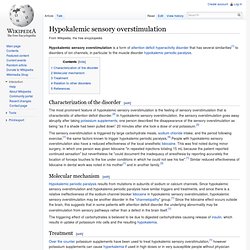

Thoughts on Methylation Cycle Stimulation. The benefits of TMG (Tri-methyl-glycine) Under-methylation/HISTADELIAUnder-methylation/HISTADELIA. S-Adenosyl-L-methionine (SAMe): from the bench to the bedside—molecular basis of a pleiotrophic molecule. © 2002 American Society for Clinical Nutrition Teodoro Bottiglieri + Author Affiliations Abstract S-Adenosyl-l-methionine (SAMe), a metabolite present in all living cells, plays a central role in cellular biochemistry as a precursor to methylation, aminopropylation, and transsulfuration pathways.

As such, SAMe has been studied extensively since its chemical structure was first described in 1952. SAMe good for use on an as-need basis? Am I in the Twilight Zone?

I agree, it's a laugh riot that I'm looking for some kind of basis for believing something to be true. But it's the weekend, I've got to have fun somehow. Animal, here's some thoughts on whether SAM-e/etc response indicates that you're necessarily an undermethylator: As they're being used here, the categories of over/undermethylator seem to have been defined by the Pfeiffer Treatment Center (PTC). Their treatment recommendations are the source of all that unreferenced information found all over the internet (including here, and the other thread). As there are many different methylation reactions going on in the body, the either/or relationship of over/under can be a false dichotomy.
Glycolysis. Glycolysis overview Glycolysis (from glycose, an older term[1] for glucose + -lysis degradation) is the metabolic pathway that converts glucose C6H12O6, into pyruvate, CH3COCOO− + H+.
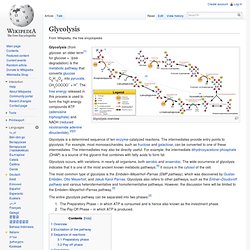
The free energy released in this process is used to form the high-energy compounds ATP (adenosine triphosphate) and NADH (reduced nicotinamide adenine dinucleotide).[2][3] Glycolysis is a determined sequence of ten enzyme-catalyzed reactions. The intermediates provide entry points to glycolysis. For example, most monosaccharides, such as fructose and galactose, can be converted to one of these intermediates. Glucagon. Glucagon is a peptide hormone, produced by alpha cells of the pancreas, that raises the concentration of glucose in the bloodstream.

Its effect is opposite that of insulin, which lowers the glucose concentration.[1] The pancreas releases glucagon when the concentration of glucose in the bloodstream falls too low. Glucagon causes the liver to convert stored glycogen into glucose, which is released into the bloodstream. High blood glucose levels stimulate the release of insulin. Insulin allows glucose to be taken up and used by insulin-dependent tissues. Glycogenolysis. Gluconeogenesis. Gluconeogenesis (abbreviated GNG) is a metabolic pathway that results in the generation of glucose from non-carbohydrate carbon substrates such as pyruvate, lactate, glycerol, glucogenic amino acids, and fatty acids (both even-chain[1] and odd-chain).
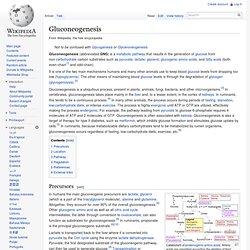
It is one of the two main mechanisms humans and many other animals use to keep blood glucose levels from dropping too low (hypoglycemia). Glutathione. Thiol groups are reducing agents, existing at a concentration of approximately 5 mM in animal cells.

Glutathione reduces disulfide bonds formed within cytoplasmic proteins to cysteines by serving as an electron donor. Superoxide dismutase. Superoxide dismutases (SOD, EC 1.15.1.1) are enzymes that catalyze the dismutation of superoxide (O2−) into oxygen and hydrogen peroxide.
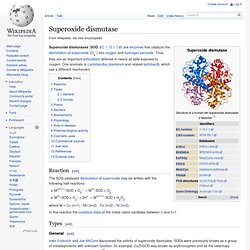
Thus, they are an important antioxidant defense in nearly all cells exposed to oxygen. One anomaly is Lactobacillus plantarum and related lactobacilli, which use a different mechanism. Dimercaptosuccinic acid. Dimercaptosuccinic acid (DMSA), is the organosulfur compound with the formula HO2CCH(SH)CH(SH)CO2H.
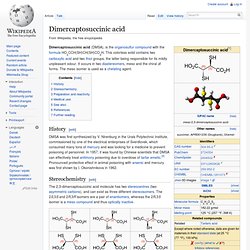
This colorless solid contains two carboxylic acid and two thiol groups, the latter being responsible for its mildly unpleasant odour. It occurs in two diastereomers, meso and the chiral dl forms. The meso isomer is used as a chelating agent. History[edit] Stereochemistry[edit] The 2,3-dimercaptosuccinic acid molecule has two stereocentres (two asymmetric carbons), and can exist as three different stereoisomers. Preparation and reactivity[edit] DMSA may be prepared by reacting acetylenedicarboxylic acid with sodium thiosulfate[3] or thioacetic acid followed by hydrolysis.
Succinic semialdehyde dehydrogenase deficiency. Succinic semialdehyde dehydrogenase deficiency (SSADHD), also known as 4-hydroxybutyric aciduria or gamma-hydroxybutyric aciduria, is a rare autosomal recessive disorder[1] of the degradation pathway of the inhibitory neurotransmitter γ-aminobutyric acid, or GABA.
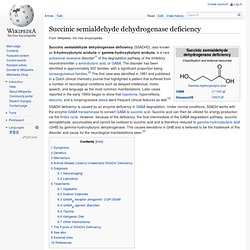
The disorder has been identified in approximately 350 families, with a significant proportion being consanguineous families.[2] The first case was identified in 1981 and published in a Dutch clinical chemistry journal that highlighted a patient that suffered from a number of neurological conditions such as delayed intellectual, motor, speech, and language as the most common manifestations. Later cases reported in the early 1990s began to show that hypotonia, hyporreflexia, seizures, and a nonprogressive ataxia were frequent clinical features as well.[3] SSADH deficiency is caused by an enzyme deficiency in GABA degradation. Symptoms[edit] The age of onset ranges from newborn period to 25 years. Hypokalemic sensory overstimulation. Hypokalemic sensory overstimulation is a form of attention deficit hyperactivity disorder that has several similarities[1] to disorders of ion channels, in particular to the muscle disorder hypokalemic periodic paralysis.
